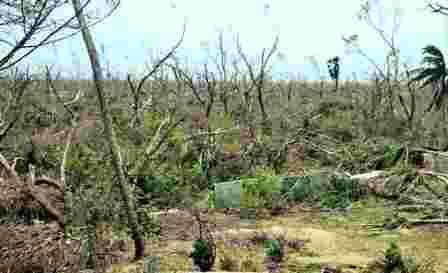Fani Devastated Konark-Balukhand Sanctuary, Opened Calamity Route

Puri: The Puri coast has become most vulnerable to natural calamity as the extremely severe cyclonic storm Fani destroyed bio-diversity in the form of the Konark-Balukhand sanctuary.
A preliminary report prepared by the forest department, till May 8, says on an average around 1,000 trees per hectare have been damaged, and the century-old sanctuary spread across 87 square km has lost around 87 lakh trees of which 70 per cent were felled and 25 were uprooted. The remaining standing trees have no leaves left.
The sanctuary abounded with casuarina, tamarind, anacardium, karanja, polanga, neem and other trees.
Notified in 1984, the sanctuary affords security and habitat protection to about 4,000 deer, including 3,000 spotted deer, antelopes and over 100 black bucks. Apart from this, stripped hyena and jungle cats are also found in large numbers.
According to Balukhand range officer Saroj Mohanty, no trace of wildlife is left in the sanctuary since Fani made landfall on May 3.
“Strangely, we did not find any wild animal inside the sanctuary except decomposed carcasses of some domestic animals. We assume the wild animals might have taken shelter in human habitations in the sanctuary’s periphery and will return to their habitat very soon,” he said.
However, Saroj said, the graminivorous species will have acute shortage of food as it will take few days for them to survive on fallen cashew and grass planted by the forest department at eight places inside the sanctuary.
“Apart from this, the wild animals will also have acute shortage of water as several puddles inside the sanctuary are now covered with uprooted trees,” said staff of the Balukhand, Balighai, Phulapatna, Beladala and Bangore forest camp under Balukhand Forest Range, who are presently conducting a survey of damage to flora and fauna at the sanctuary.
According to information provided by Google Wikipedia, creation of the Konark-Balukhand forest dates back to 1916. The sanctuary was accorded its status on April 23, 1984, and plays an important role in maintaining agricultural productivity in the hinterland by arresting land erosion. Besides, it also contributes to recharging freshwater levels up-ground and prevents ingress of seawater.

Comments are closed.